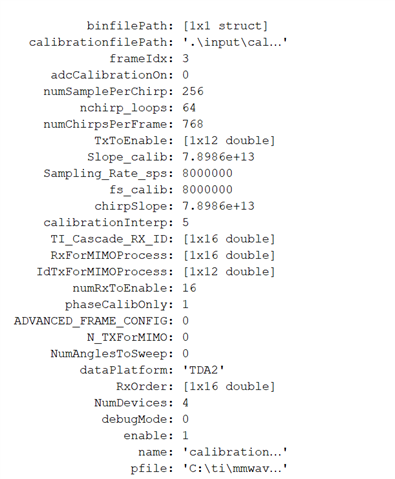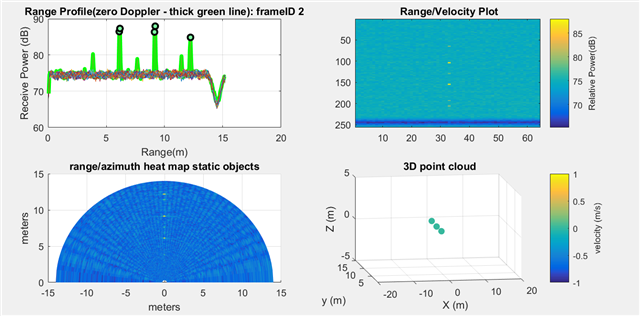Other Parts Discussed in Thread: AWR1843
I had issue with AWR2243 data post process. I described the issue wrongly previously in the forum and the problem did not get resolved. Here i rewrite my issue as follows:
---------
The outputs (processed by cascade_MIMO_signalProcessing.m) were almost the same for the following different inputs:
1. put the board toward to the sky (1s): Data here: www.dropbox.com/.../sky_04252021.zip
2. road side with pedestrian and SUV (5s)
3. corner reflector put at 20ft distance (1s): Data here: www.dropbox.com/.../cr_20ft_04252021.zip
we used MIMO Configuration for data capture:
1. Cascade_Configuration_MIMO.lua for configuration of devices (test_source_enable = 0 -- 0: Disable, 1: Enable)
2. Cascade_Capture.lua for capturing data
Here is calibrationObj info read from matlab workspace

To remove the impact of calibration, we set calibrationObj.adcCalibrationOn=0. Basically, the process script generated the same plots with above mentioned three dataset. (if calibrationObj.adcCalibrationOn=1, the conclusion is the same.)
Output with calibrationObj.adcCalibrationOn=0

We did compare the raw data and they are similar but apparently different.
Is it HW issue, data collection issue, configuration issue, or data process setting issue?


